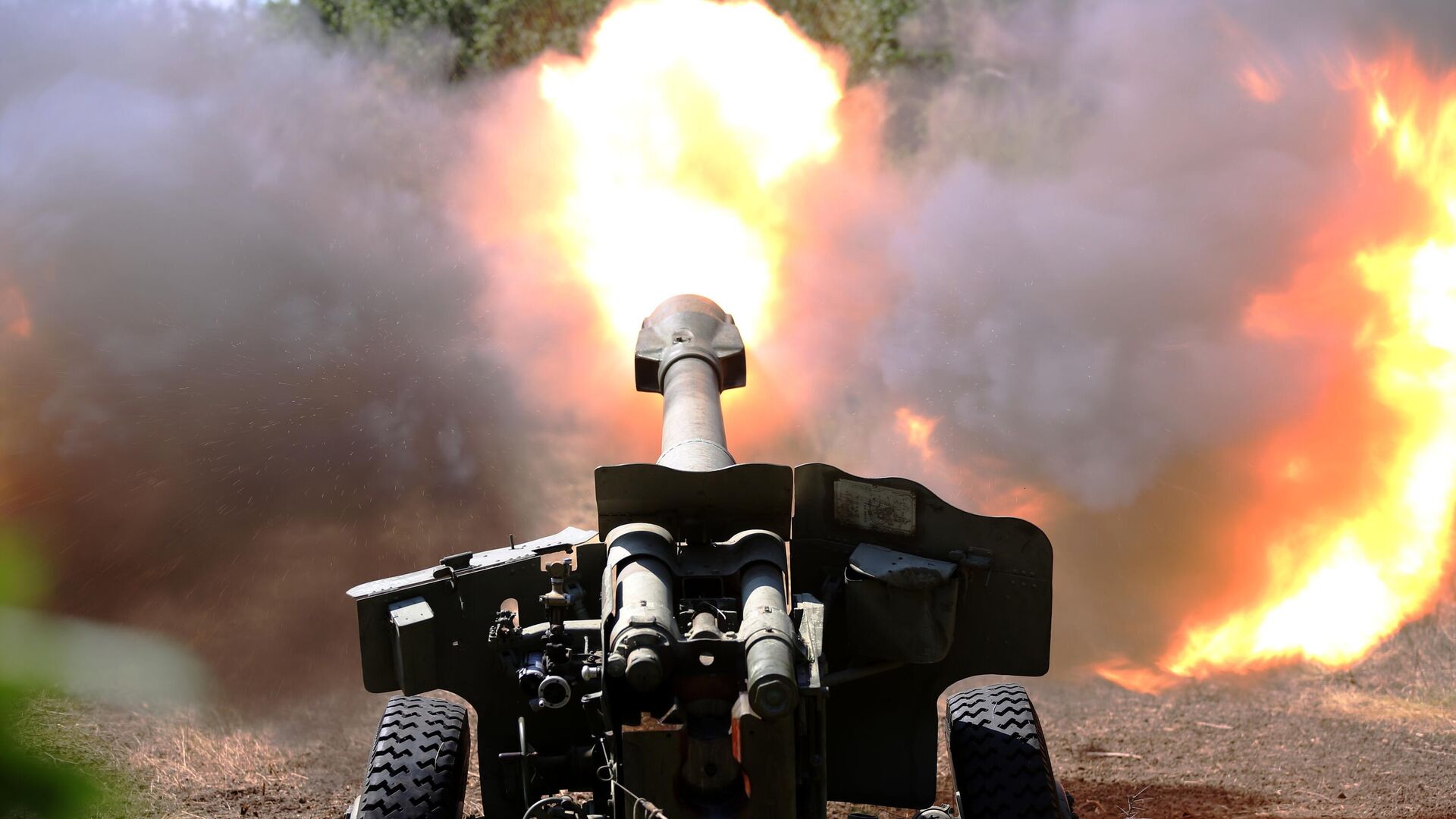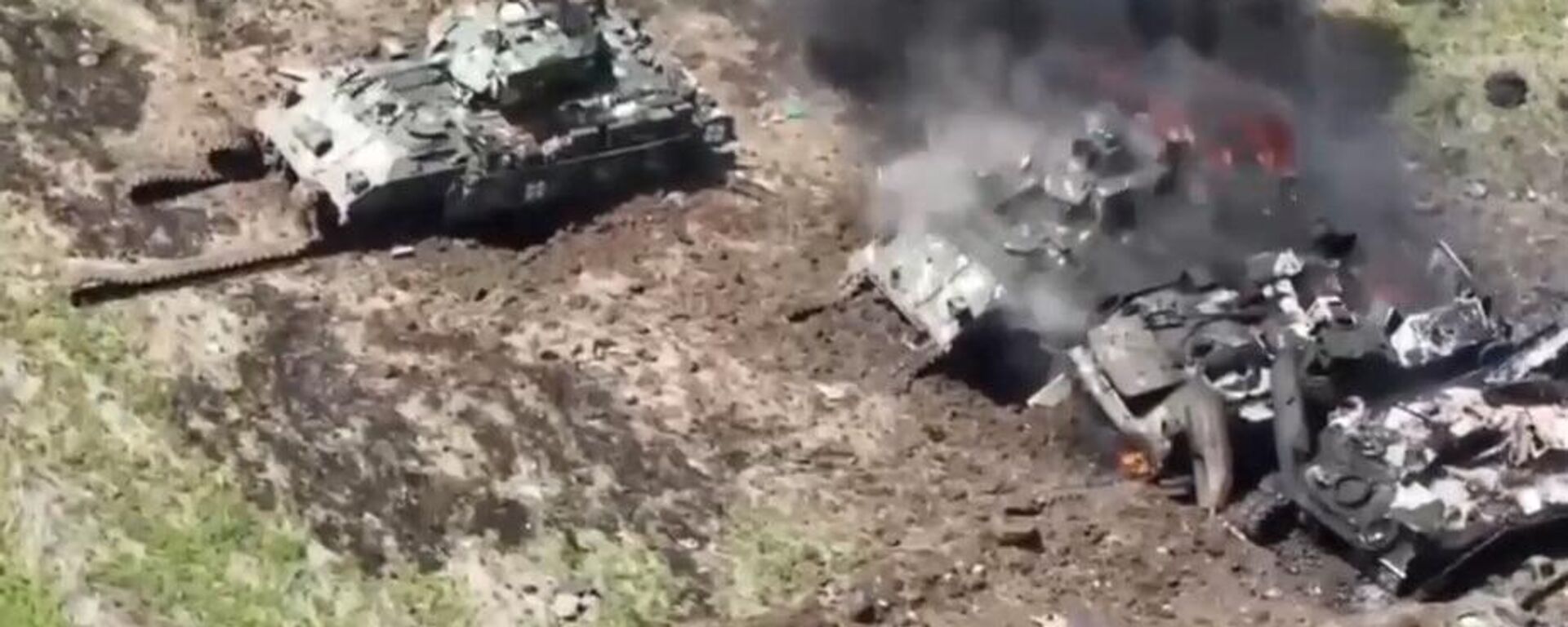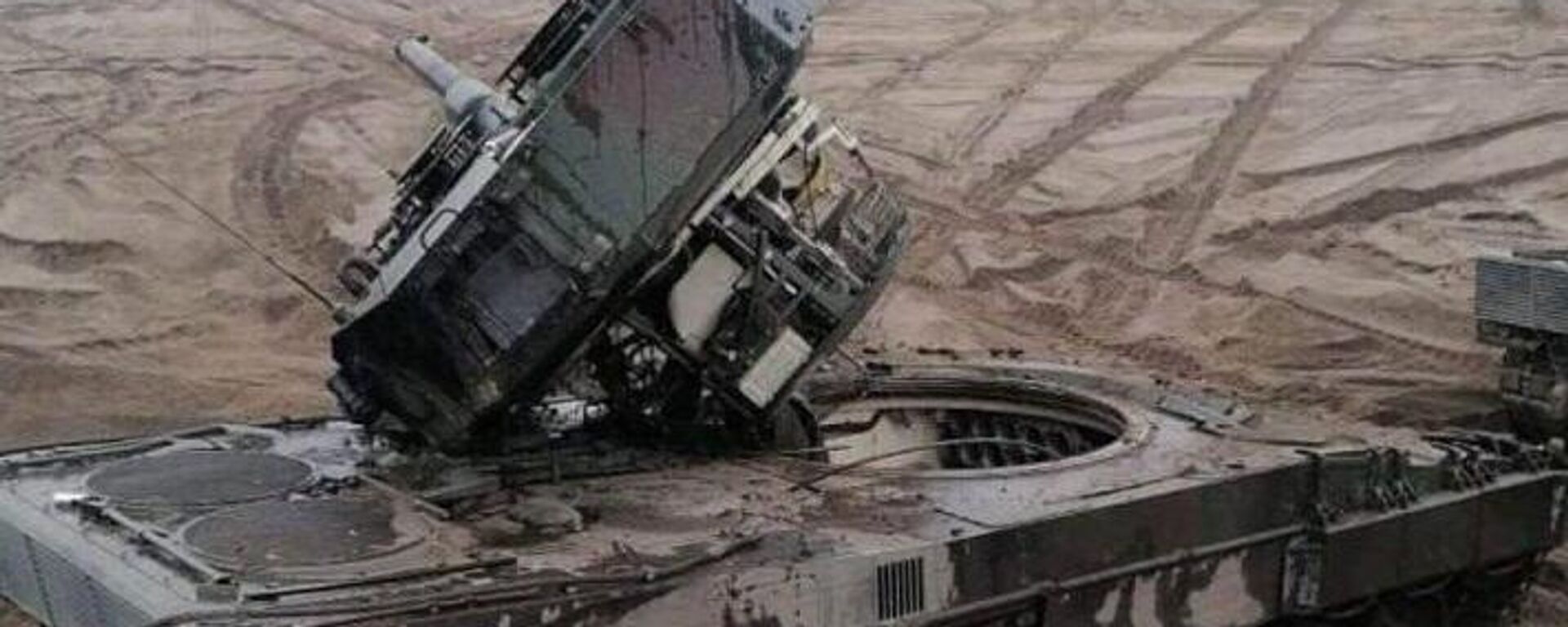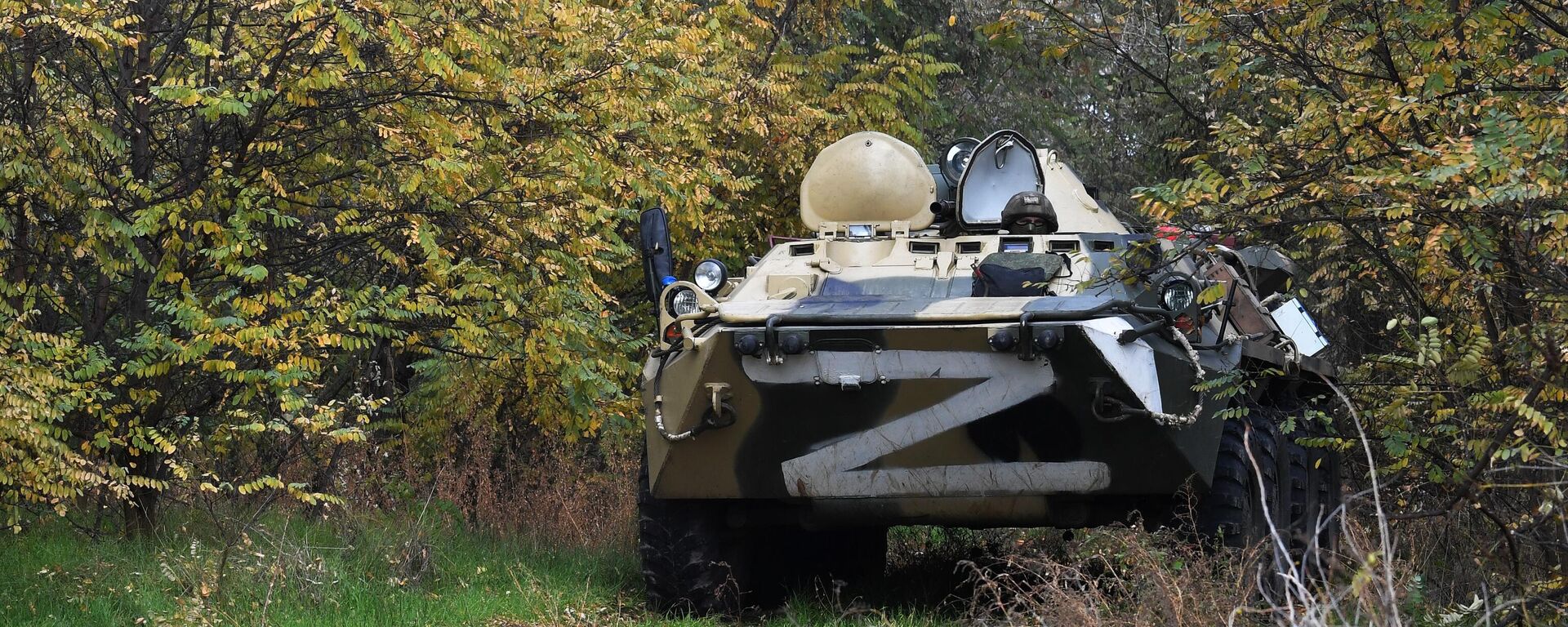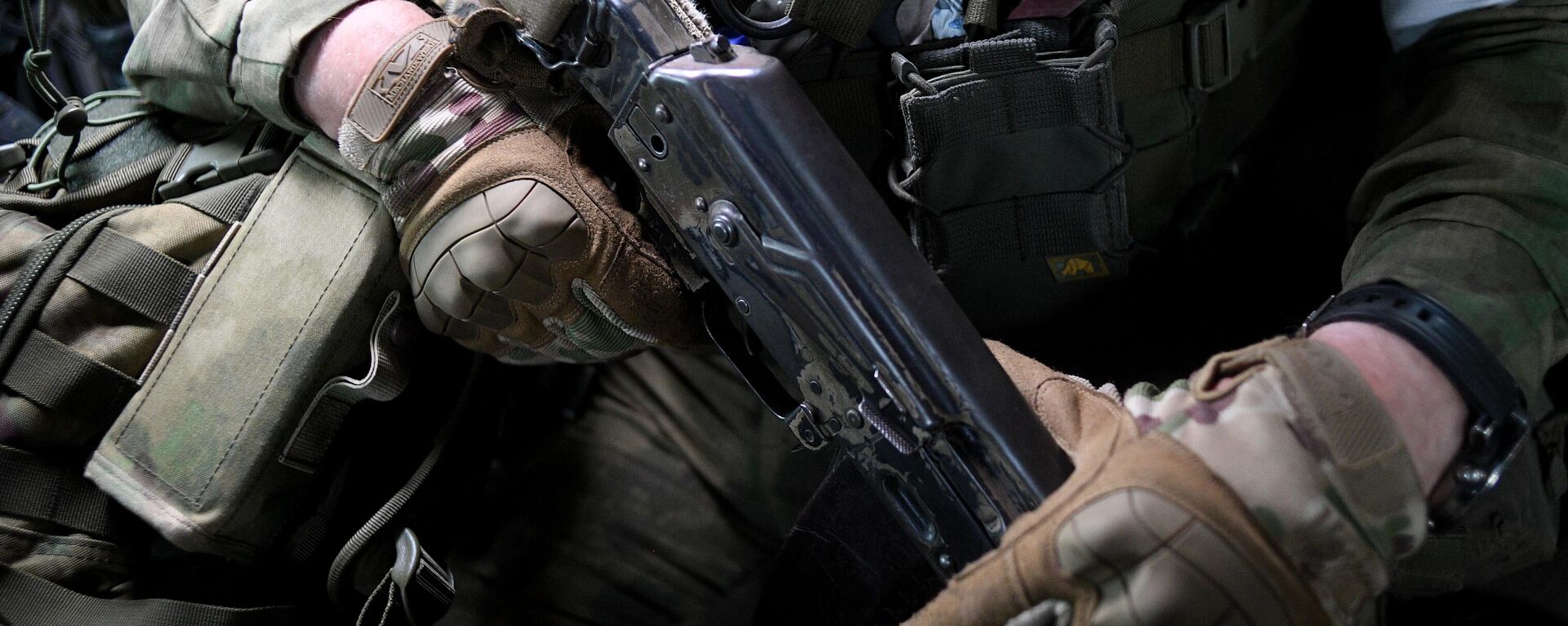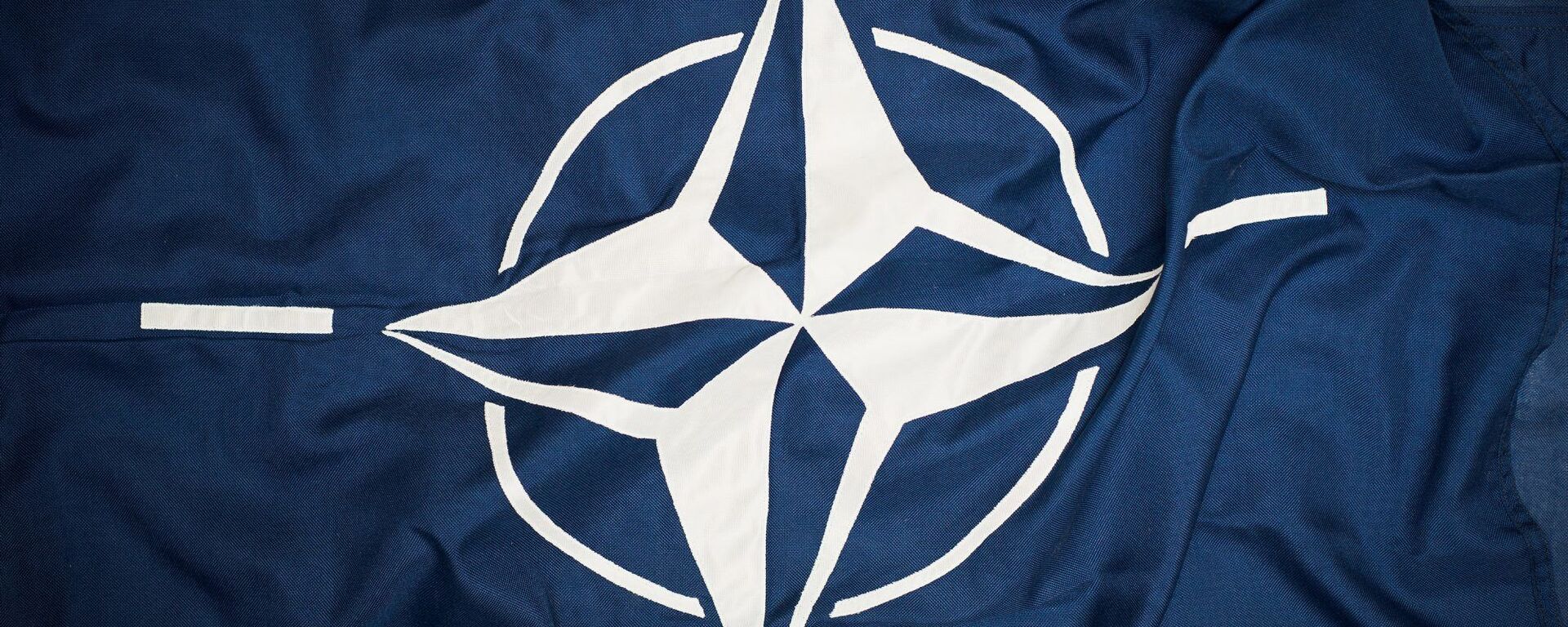https://sputnikglobe.com/20230610/scott-ritter-ukrainian-counteroffensive-runs-into-defensive-wall-1111050140.html
Scott Ritter: Ukrainian Counteroffensive Runs Into Defensive Wall
Scott Ritter: Ukrainian Counteroffensive Runs Into Defensive Wall
Sputnik International
Over the course of the past few days, Ukraine has thrown two of its best-trained, best-equipped mechanized brigades into offensive operations against entrenched Russian defenders in the Zaporozhye sector of the front lines.
2023-06-10T17:25+0000
2023-06-10T17:25+0000
2023-06-10T17:25+0000
analysis
nato
ukraine
russia
donbass
offensive
https://cdn1.img.sputnikglobe.com/img/07e7/05/0b/1110261550_0:0:3030:1705_1920x0_80_0_0_03d957d5e7ce01552bfd7f544f95e3c2.jpg
These two brigades had been hand-picked for this job, having been equipped with modern Western tanks and infantry fighting vehicles, supported by Western-supplied artillery, and using NATO-specific tactics shaped by NATO-provided intelligence and NATO operational planning. In short, these two brigades represented a top-level NATO-level capability, the epitome of the nexus between Ukraine and the Collective West in their ongoing war to destroy Russia.They failed.As the world comes to grips with the imagery of destroyed US-manufactured M-2 Bradley infantry fighting vehicles and German-made Leopard 2A6 tanks abandoned and burning on the Ukrainian steppe, the harsh truth regarding the futility of its larger designs—the strategic defeat of Russia—is starting to sink in.The reality, however, is that Ukraine was never going to achieve its stated objective of punching through the Russian defenses to sever the land bridge connecting Crimea with Russia proper. This was pie-in-the-sky thinking promulgated by Ukraine's Western supporters to motivate the Ukrainians into committing the equivalent of mass suicide to inflict similarly prohibitive casualties among the Russian defenders.The Western hope was that Russia would become demoralized by these casualties and accept a negotiated end to the conflict on terms acceptable to both Ukraine and its Western allies.So far, Ukraine and its Western allies have failed.The genesis of this failure can be traced to two things. First, the low-opinion Ukraine and their NATO allies had regarding the combat capabilities of the Russian army, and in particular those forces deployed in the Zaporozhye region, and second, the unrealistic expectations assigned to NATO training and equipment that had been provided to the Ukrainian forces assigned the task of breaking through the Russian defenses.The area selected by Ukraine and its NATO partners as the focus of effort for the counteroffensive was held by the 42nd Guards Motorized Rifle Division, part of the 58th Combined Arms Army. The Institute for the Study of War, a US-based think tank with close ties to US and NATO, claimed that the troops of the 42nd Guards Motorized Rifle Division "are predominantly comprised of mobilized recruits and volunteers and are therefore likely to face some problems with poor training and discipline."Moreover, it accused at least one of the subordinate regiments—the 70th motorized rifle regiment—of performing poorly during the initial phases of the Special Military Operation in 2022.It is therefore reasonable to believe that NATO and Ukrainian military planners, using intelligence assessments that highlighted perceived command and control weaknesses and poor morale among the Russian forces which, when combined with poor past performance, believed that the Russian defenses in the Zaporozhye sector manned by the 42nd Guards Motorized Rifle Division would collapse under the weight of a NATO-style assault, allowing Ukrainian forces to penetrate deep into the Russian defenses.While the fighting in Zaporozhye is not yet finished, the initial results on the battlefield show that, contrary to the expectations of Ukraine and its NATO partners, the men of the 42ndGuards Rifle Division performed their tasks in a professional manner, decisively defeating the Ukrainian assault forces. The 70th Motorized Rifle Regiment has been singled out as performing very well under difficult circumstances. The same can be said of the 291st Motorized Rifle Regiment and the 71st Motorized Rifles Regiment, along with special forces soldiers from the 22nd Spetsnaz Brigade. Analysts from ISW, in assessing the initial successes of the Russian defenders, noted that "Russian forces appear to have executed their formal tactical defensive doctrine in response to the Ukrainian attacks."This, of course, should have taken no one by surprise, since the individual in command of Russian forces in the Zaporozhye area is Colonel General Alexander Romanchuk, the man who is responsible for conceiving modern Russian defensive doctrine. In April 2023 Romanchuk, who at that time was serving as the Rector of the Combined Arms Academy of the Armed Forces of the Russian Federation (the equivalent of the United States Army’s Command and General Staff College at Fort Leavenworth), co-authored an article titled "Prospects for Improving the Efficiency of Army Defensive Operations."This represents a restatement of Soviet-era doctrine. Indeed, Romanchuk draws upon the defeat of German offensive operations in the vicinity of Lake Balaton in March 1945 as representing an ideal implementation of this doctrine, underscoring "a bold maneuver of the reserves…especially artillery, the skillful use of anti-tank reserves, vigilant detachments of obstacles and the arrangement of fire ambushes" by the Russian forces in defeating the German attack.Romanchuk, however, did not simply reiterate old doctrine in his paper. Instead, he emphasizes the concept of "dispersed forces'' in building a defensive scheme capable of prevailing on the modern battlefield. "A dispersed defensive operation should become a logical response to a superior enemy," Romanchuk writes.Such an operation "is based on the retention of important areas, objects and transport hubs in separate most important directions," and is "characterized by an even distribution of forces and resources in areas, and decentralized use of formations and military units of the armed forces and special forces."Romanchuk then went on to describe the ideal deployment scheme for these "dispersed forces" — one which focuses on three separate "zones of defense responsibility" separated by distances of between 8 and 12 kilometers. These gaps are covered by Russian artillery. The first "zone" is the "cover" zone, whose task is to define the main axes of the enemy's advance. The next "zone" is the "main line of defense", which is designed to halt enemy attacks using obstacle belts and fire power (artillery and air strikes). The last "zone" is the "reserve", which is responsible for mounting counterattacks designed to push the attacking forces back to their original positions.Romanchuk’s doctrine was the blueprint for the Russian defensive scheme employed in Zaporozhye. Indeed, Romanchuk was pulled from his teaching position at the Combined Arms Academy and put in command of the Zaporozhye sector. In other words, the place chosen by NATO and Ukrainian intelligence as the "weak spot" in the Russian defensive scheme was designed by Russia's top specialist in defensive combat and placed under his direct command.NATO and Ukraine gambled that Russia lacked the military capacity to successfully implement its own military doctrine, believing that Russian command staffs lacked the communications necessary to coordinate the complex operations necessary to implement this doctrine, and that the Russian forces—especially those who were recently mobilized—lacked both the training and morale needed to perform well under stressful combat conditions.They were wrong on both counts.NATO and Ukraine's poor assessment of Russian military capability mirrored their own exaggerated assessments of Ukrainian units tasked with attacking the Russian defenses in Zaporozhye, namely the 33rd and 47th Mechanized Brigades. Both units were the recipients of modern NATO equipment, including Leopard tanks (the 33rd) and Bradley infantry fighting vehicles (the 47th). The officers and men of both units had been provided with the best training NATO could provide regarding modern combined-arms operations, including weeks of specialized training in Germany which focused on platoon, company, and battalion tactics and operations integrating firepower and maneuver while undertaking offensive operations. The Ukrainian troops, working side by side with their NATO instructors, started by using computer simulations to introduce them to the complexities of the modern battlefield, before moving to the field for realistic hands-on training using the very NATO-provided equipment they would use against the Russians.US "experts" like Mark Hertling, a retired US Army general believed that the combination of advanced western military equipment and superior NATO-style tactics "will allow Ukraine's emerging combined-arms teams to conduct high-tempo maneuver" capable of overwhelming the Russian defenders in Ukraine.He was wrong.Hertling and his active-duty NATO brethren would have done well to listen to the words of General Christopher Cavoli, NATO’s Supreme Allied Commander Europe, when speaking before a Swedish defense conference this past January.The takeaway from this revelation is that NATO is neither trained nor equipped to fight the kind of fight they are demanding Ukraine execute against Russia.The sad truth of the matter is that there are no NATO forces capable of successfully executing the offensive tasks that have been assigned to Ukraine. No one doubts the courage and commitment of the Ukrainian forces which have been thrown against Colonel General Romanchuk’s defensive barrier. But courage and commitment cannot overcome the reality that NATO lacks the ability, both in terms of equipment and doctrine, to successfully defeat Russia in a force-on-force confrontation, especially one which has Russia playing to its doctrinal strength (defensive operations) while NATO seeks to do something (an assault against prepared defenses) that it has no experience in doing.Moreover, NATO and the Ukrainian high command threw the Ukrainian brigades into the teeth of the Russian defensive buzzsaw without adequate fire support, meaning that the Russians were free to maximize their superiority in artillery and air power to neutralize and destroy the Ukrainian attacking forces before they could generate the momentum expected from "high-tempo maneuver."The end result: Russian reality trumped NATO theory on the battlefield, and it is Ukraine's military that once again paid the heaviest price. Moreover, there is no reason to believe that this situation will change anytime soon, if ever, a fact that bodes poorly for the future of Ukraine and NATO going forward.
https://sputnikglobe.com/20230610/watch-ukrainian-armored-units-get-obliterated-amid-counteroffensive-1111046802.html
https://sputnikglobe.com/20230418/ukrainian-tankers-accidentally-rip-turret-off-leopard-2-during-training--photos-1109628677.html
https://sputnikglobe.com/20230605/ukraine-lost-1500-people-28-tanks-in-southern-donetsk-sector---russian-defense-ministry-1110935685.html
https://sputnikglobe.com/20230610/watch-russian-forces-blazing-ukrainian-tanks-and-ifvs-1111045571.html
https://sputnikglobe.com/20230610/us-envoy-pours-cold-water-on-ukraines-nato-entry-prospects-1111039699.html
ukraine
russia
donbass
Sputnik International
feedback@sputniknews.com
+74956456601
MIA „Rossiya Segodnya“
2023
Scott Ritter
https://cdn1.img.sputnikglobe.com/img/07e6/0c/17/1105733958_0:0:334:334_100x100_80_0_0_b457e4e9c850ef224b0cc79059bb38df.jpg
Scott Ritter
https://cdn1.img.sputnikglobe.com/img/07e6/0c/17/1105733958_0:0:334:334_100x100_80_0_0_b457e4e9c850ef224b0cc79059bb38df.jpg
News
en_EN
Sputnik International
feedback@sputniknews.com
+74956456601
MIA „Rossiya Segodnya“
Sputnik International
feedback@sputniknews.com
+74956456601
MIA „Rossiya Segodnya“
Scott Ritter
https://cdn1.img.sputnikglobe.com/img/07e6/0c/17/1105733958_0:0:334:334_100x100_80_0_0_b457e4e9c850ef224b0cc79059bb38df.jpg
ukraine, ukrainian counter-offensive, russia-ukraine war, ukrainian crisis, ukrainian war, conflict in ukraine, who wins in ukraine, scott ritter on ukraine, ukraine offensive results, ukrainian tanks destroyed, russia vs ukraine, ukrainian casualties
ukraine, ukrainian counter-offensive, russia-ukraine war, ukrainian crisis, ukrainian war, conflict in ukraine, who wins in ukraine, scott ritter on ukraine, ukraine offensive results, ukrainian tanks destroyed, russia vs ukraine, ukrainian casualties
Scott Ritter: Ukrainian Counteroffensive Runs Into Defensive Wall
Over the course of the past few days, Ukraine has thrown two of its best-trained, best-equipped mechanized brigades into offensive operations against entrenched Russian defenders in the Zaporozhye sector of the front lines.
These two brigades had been hand-picked for this job, having been equipped with modern Western tanks and infantry fighting vehicles, supported by Western-supplied artillery, and using NATO-specific tactics shaped by NATO-provided intelligence and
NATO operational planning. In short, these two brigades represented a top-level NATO-level capability, the epitome of the nexus between Ukraine and the Collective West in their ongoing war to destroy Russia.
As the world comes to grips with the imagery of destroyed US-manufactured M-2 Bradley infantry fighting vehicles and German-made Leopard 2A6 tanks abandoned and burning on the Ukrainian steppe, the harsh truth regarding the futility of its larger designs—the strategic defeat of Russia—is starting to sink in.
The reality, however, is that Ukraine was never going to achieve its stated objective of punching through the Russian defenses to sever the land bridge connecting Crimea with Russia proper. This was pie-in-the-sky thinking promulgated by Ukraine's Western supporters to motivate the Ukrainians into committing the equivalent of mass suicide to inflict similarly prohibitive casualties among the Russian defenders.
The Western hope was that Russia would become demoralized by these casualties and accept a negotiated end to the conflict on terms acceptable to both Ukraine and its Western allies.
So far, Ukraine and its Western allies have failed.
The genesis of this failure can be traced to two things. First, the low-opinion Ukraine and their NATO allies had regarding the combat capabilities of the Russian army, and in particular those forces deployed in the Zaporozhye region, and second, the unrealistic expectations assigned to NATO training and equipment that had been provided to the Ukrainian forces assigned the task of breaking through the Russian defenses.
The area selected by Ukraine and its NATO partners as the focus of effort for the
counteroffensive was held by the 42nd Guards Motorized Rifle Division, part of the 58th Combined Arms Army. The Institute for the Study of War, a US-based think tank with close ties to US and NATO, claimed that the troops of the 42nd Guards Motorized Rifle Division "are predominantly comprised of mobilized recruits and volunteers and are therefore likely to face some problems with poor training and discipline."
Moreover, it accused at least one of the subordinate regiments—the 70th motorized rifle regiment—of performing poorly during the initial phases of the Special Military Operation in 2022.
It is therefore reasonable to believe that NATO and Ukrainian military planners, using intelligence assessments that highlighted perceived command and control weaknesses and poor morale among the Russian forces which, when combined with poor past performance, believed that the Russian defenses in the Zaporozhye sector manned by the 42nd Guards Motorized Rifle Division would collapse under the weight of a NATO-style assault, allowing Ukrainian forces to penetrate deep into the Russian defenses.
While the fighting in Zaporozhye is not yet finished, the initial results on the battlefield show that, contrary to the expectations of Ukraine and its NATO partners, the men of the 42ndGuards Rifle Division performed their tasks in a professional manner, decisively defeating the Ukrainian assault forces. The 70th Motorized Rifle Regiment has been singled out as performing very well under difficult circumstances. The same can be said of the 291st Motorized Rifle Regiment and the 71st Motorized Rifles Regiment, along with special forces soldiers from the 22nd Spetsnaz Brigade. Analysts from ISW, in assessing the initial successes of the Russian defenders, noted that "Russian forces appear to have executed their formal tactical defensive doctrine in response to the Ukrainian attacks."
This, of course, should have taken no one by surprise, since the individual in command of Russian forces in the Zaporozhye area is Colonel General Alexander Romanchuk, the man who is responsible for conceiving modern Russian defensive doctrine. In April 2023 Romanchuk, who at that time was serving as the Rector of the Combined Arms Academy of the Armed Forces of the Russian Federation (the equivalent of the United States Army’s Command and General Staff College at Fort Leavenworth), co-authored an article titled "Prospects for Improving the Efficiency of Army Defensive Operations."
In the article, Romanchuk noted that the main mission of a defending force "is to neutralize the initiative of the advancing enemy, i.e., to bring him to the state of impossibility to continue advancing with deployed forces. Ultimately, this allows you to reduce his activity and seize the initiative by going over to a decisive counter-offensive to defeat the enemy with shock groups."
This represents a restatement of Soviet-era doctrine. Indeed, Romanchuk draws upon the defeat of German offensive operations in the vicinity of Lake Balaton in March 1945 as representing an ideal implementation of this doctrine, underscoring "a bold maneuver of the reserves…especially artillery, the skillful use of anti-tank reserves, vigilant detachments of obstacles and the arrangement of fire ambushes" by the Russian forces in defeating the German attack.
Romanchuk, however, did not simply reiterate old doctrine in his paper. Instead, he emphasizes the concept of "dispersed forces'' in building a defensive scheme capable of prevailing on the modern battlefield. "A dispersed defensive operation should become a logical response to a superior enemy," Romanchuk writes.
Such an operation "is based on the retention of important areas, objects and transport hubs in separate most important directions," and is "characterized by an even distribution of forces and resources in areas, and decentralized use of formations and military units of the armed forces and special forces."
Romanchuk then went on to describe the ideal deployment scheme for these "dispersed forces" — one which focuses on three separate "zones of defense responsibility" separated by distances of between 8 and 12 kilometers. These gaps are covered by Russian artillery. The first "zone" is the "cover" zone, whose task is to define the main axes of the enemy's advance. The next "zone" is the "main line of defense", which is designed to halt enemy attacks using obstacle belts and fire power (artillery and air strikes). The last "zone" is the "reserve", which is responsible for mounting counterattacks designed to push the attacking forces back to their original positions.
Romanchuk’s doctrine was the blueprint for the Russian defensive scheme employed in Zaporozhye. Indeed, Romanchuk was pulled from his teaching position at the Combined Arms Academy and put in command of the Zaporozhye sector. In other words, the place chosen by NATO and Ukrainian intelligence as the "weak spot" in the Russian defensive scheme was designed by Russia's top specialist in defensive combat and placed under his direct command.
NATO and Ukraine gambled that Russia lacked the military capacity to successfully implement its own military doctrine, believing that Russian command staffs lacked the communications necessary to coordinate the complex operations necessary to implement this doctrine, and that the Russian forces—especially those who were recently mobilized—lacked both the training and morale needed to perform well under stressful combat conditions.
They were wrong on both counts.
NATO and Ukraine's poor assessment of Russian military capability mirrored their own exaggerated assessments of Ukrainian units tasked with attacking the Russian defenses in Zaporozhye, namely the
33rd and
47th Mechanized Brigades. Both units were the recipients of modern NATO equipment, including Leopard tanks (the 33rd) and
Bradley infantry fighting vehicles (the 47th). The officers and men of both units had been provided with the best training NATO could provide regarding modern combined-arms operations, including weeks of specialized training in Germany which focused on platoon, company, and battalion tactics and operations integrating firepower and maneuver while undertaking offensive operations.
The Ukrainian troops, working side by side with their NATO instructors, started by using
computer simulations to introduce them to the complexities of the modern battlefield, before moving to the field for realistic hands-on training using the very NATO-provided equipment they would use against the Russians.
US "experts" like Mark Hertling, a retired US Army general believed that the combination of advanced western military equipment and superior NATO-style tactics "will allow Ukraine's emerging combined-arms teams to conduct high-tempo maneuver" capable of overwhelming the Russian defenders in Ukraine.
Hertling and his active-duty NATO brethren would have done well to listen to the words of General Christopher Cavoli, NATO’s Supreme Allied Commander Europe, when speaking before a Swedish defense conference this past January.
"The scale of this war [i.e., the Russian-Ukraine conflict] is out of proportion with all of our recent thinking," Cavoli noted.
The takeaway from this revelation is that NATO is neither trained nor equipped to fight the kind of fight they are demanding Ukraine execute against Russia.
The sad truth of the matter is that there are no NATO forces capable of successfully executing the offensive tasks that have been assigned to Ukraine. No one doubts the courage and commitment of the Ukrainian forces which have been thrown against Colonel General Romanchuk’s defensive barrier. But courage and commitment cannot overcome the reality that NATO lacks the ability, both in terms of equipment and doctrine, to successfully defeat Russia in a force-on-force confrontation, especially one which has Russia playing to its doctrinal strength (defensive operations) while NATO seeks to do something (an assault against prepared defenses) that it has no experience in doing.
Moreover, NATO and the Ukrainian high command threw the Ukrainian brigades into the teeth of the Russian defensive buzzsaw without adequate fire support, meaning that the Russians were free to maximize their superiority in artillery and air power to neutralize and destroy the Ukrainian attacking forces before they could generate the momentum expected from "high-tempo maneuver."
The end result: Russian reality trumped NATO theory on the battlefield, and it is Ukraine's military that once again
paid the heaviest price. Moreover, there is no reason to believe that this situation will change anytime soon, if ever, a fact that bodes poorly for the future of Ukraine and NATO going forward.
